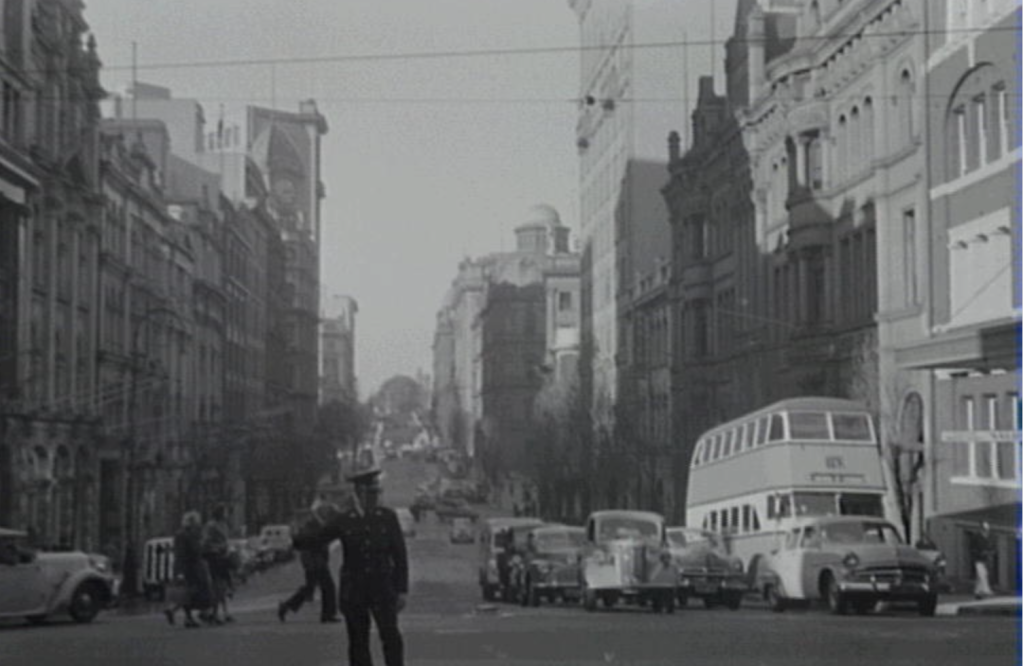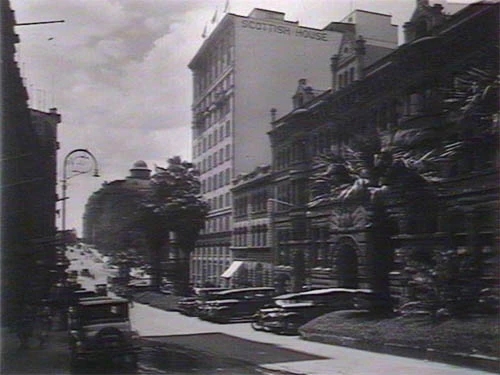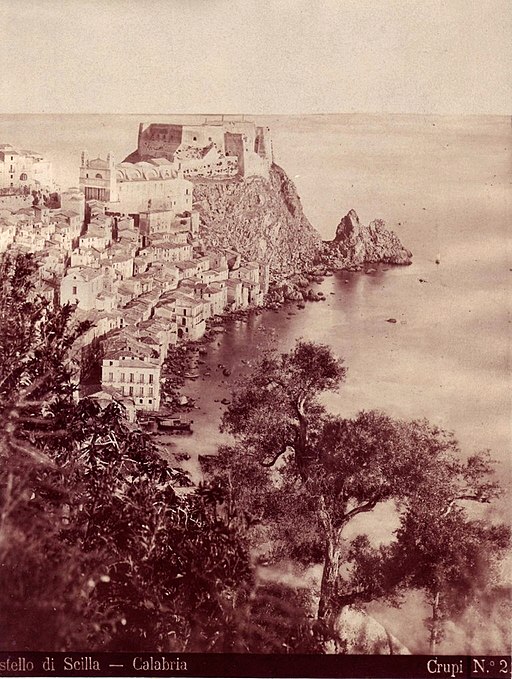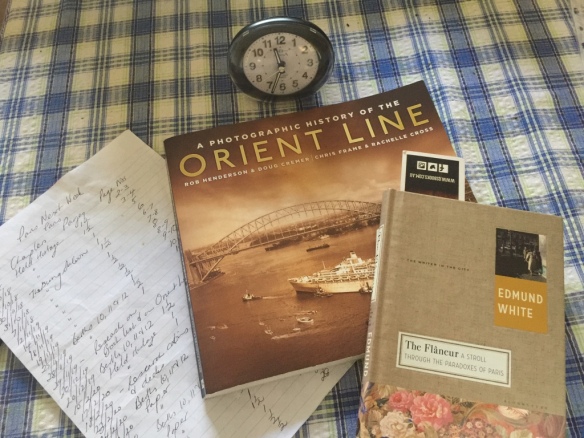
Are we defined by the things that haunt us? Perhaps haunt is a strong word. How about the things that won’t leave us alone? The things that keep popping back into our lives from time to time. For me it is two signs that I’ve been thinking about lately. The one pictured above I’m hoping will be the jumping off point for a new story.
The other one, another sign on a gate – Manderley – (obviously a fan of the book Rebecca) by the waters of the upper reaches of the Colo River, of all places. I was on a boat at the time cruising past and the gate literally opened out onto the water. I strained to see a house further up the path above the river but couldn’t. This was the 1970s and I’m suspecting that the house and the gate are long gone. From time to time over the years, I wonder idly about hiring a boat and finding the gate but the logistics of the whole endeavour keep putting me off. Still “Manderley” comes to me from time to time in both its manifestations.
Daphne du Maurier “discovered” Manderley in the late 1920s when the family began visiting Fowey in Cornwall. Sailing on her yacht Marie-Louise, Daphne had come across the enchanted woods on the Gribben Headland. “And looking north, inland, from the Gribben, I could just make out the grey roof of a house there, set in its own grounds amongst trees.”
On the first occasion Daphne and her sister Angela attempted to visit the house but the drive was three miles long and night fell before they reached the house. From Growing Pains: the shaping of a writer Daphne writes:
“The following day we tried another approach, taking M (Daphne’s mother’s) little car and driving to the west lodge, leaving the car at the gate. We walked across the park and through another gate, and came to the house. Grey, still, silent. The windows were shuttered fast, white and barred. Ivy covered the grey walls and threw tendrils round the windows. It was early still, and the house was sleeping. But later, when the sun was high, there would come no wreath of smoke from the chimneys. The shutters would not be thrown back, nor the doors unfastened. No voices would sound within those darkened rooms. Menabilly would sleep on, like the sleeping beauty of the of the fairy-tale, until someone should come to wake her.”
She visits the house many times by herself, walking the grounds, peering inside and imagining the past life of the house. Of course it is Daphne herself who wakes the house. Twice. In real life she leases the house and does it up, making it her home and living there from 1943 to 1969 when she returns it the Rashleighs. In the world of fiction she creates Manderley, the house of Maxim de Winter.
“Childhood visits to Milton Hall, Cambridgeshire influenced the descriptions of Manderley, especially the interior. Menabilly provided the setting, the long drive and the woods hiding the house from the road. The inscrutability of it, you could say.
Inscrutable too was my “Always” gate. What was its meaning? When I first saw the green gate, I had recently moved to the area after my “always” marriage broke up. In the early days when I passed the sign, I would look at it with a quizzical fascination. How hopeful of them. In darker moods, I would think, How dare they! Now I just wonder (as my character Zach will do) what do they actually mean by this nonsensical word?
And what about he persistent image of a ‘Victorian Woman’ who later developed into The French Lieutenant’s Woman – the character Sarah Woodruff in the novel by John Fowles. This image wouldn’t go away either.
In a 1969 essay titled “Notes on an Unfinished Novel,” Fowles reflects on his writing process. He said he had an image during the autumn of 1966 of “A woman [who] stands at the end of a deserted quay and stares out to sea.” He determined that she belonged to a ‘Victorian Age’ and had ‘mysterious’ and ‘vaguely romantic’ qualities. He made a note at the time about the function of the novel saying:
“You are not trying to write something one of the Victorian novelists forgot to write; but perhaps something one of them failed to write. And: Remember the etymology of the word. A novel is something new. It must have relevance to the writer’s now – so don’t ever pretend you live in 1867; or make sure the reader knows it’s a pretence.” And not long afterwards The French Lieutenant’s Woman, one of the most intriguing, postmodern historical fiction novels of the 20th century is born.
A sign, a house, a person. Whatever the object of fascination is, it seems to me that often, if we let it, obsession turns into a creation.







 It seems that now we are virtually imprisoned there is a greater need to connect. I’ve found that when I exercise my dog more people say hello and now that I have to write from home rather than at a cafe, suddenly the need to share what I’m working on is palpable, although I rarely used to talk about my projects. Here is a snippet from a chapter entitled Shopping. It is from the second book in the trilogy manuscript entitled Paris Next Week. I hope you enjoy this glimpse. Like all of us at the moment, she is imprisoned. In Sarah’s case by the threat of violence.
It seems that now we are virtually imprisoned there is a greater need to connect. I’ve found that when I exercise my dog more people say hello and now that I have to write from home rather than at a cafe, suddenly the need to share what I’m working on is palpable, although I rarely used to talk about my projects. Here is a snippet from a chapter entitled Shopping. It is from the second book in the trilogy manuscript entitled Paris Next Week. I hope you enjoy this glimpse. Like all of us at the moment, she is imprisoned. In Sarah’s case by the threat of violence.
 Or not! So, it seems that I have left myself two weeks to complete my second draft of Paris Next Week. I’m not panicking though. Generally I find that the second half of a manuscript is less of a mess than the first half. I’m hitting my stride and have usually by this stage of the work, sorted out my characters.
Or not! So, it seems that I have left myself two weeks to complete my second draft of Paris Next Week. I’m not panicking though. Generally I find that the second half of a manuscript is less of a mess than the first half. I’m hitting my stride and have usually by this stage of the work, sorted out my characters.

